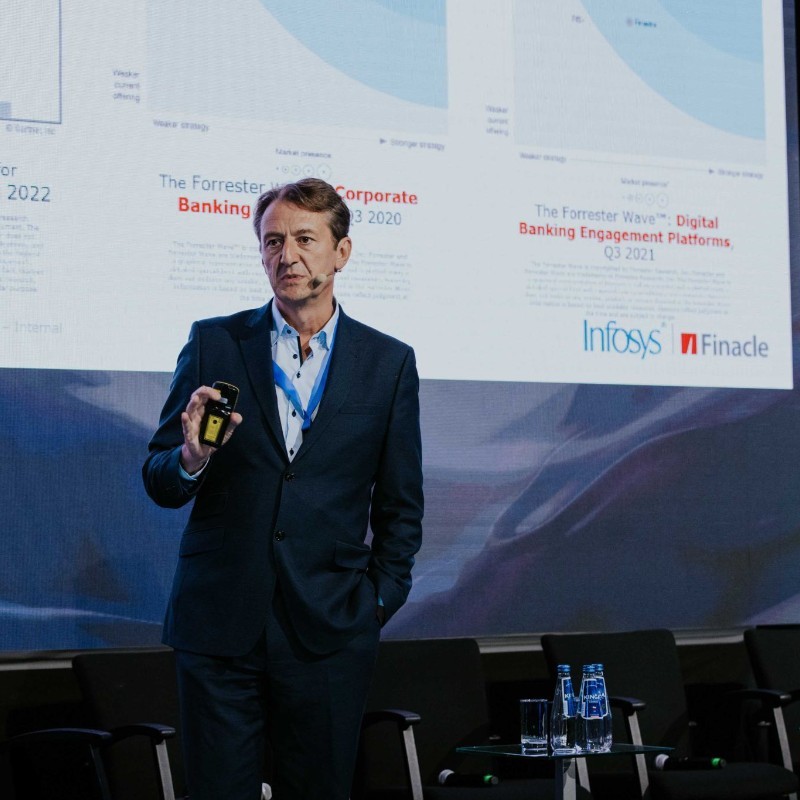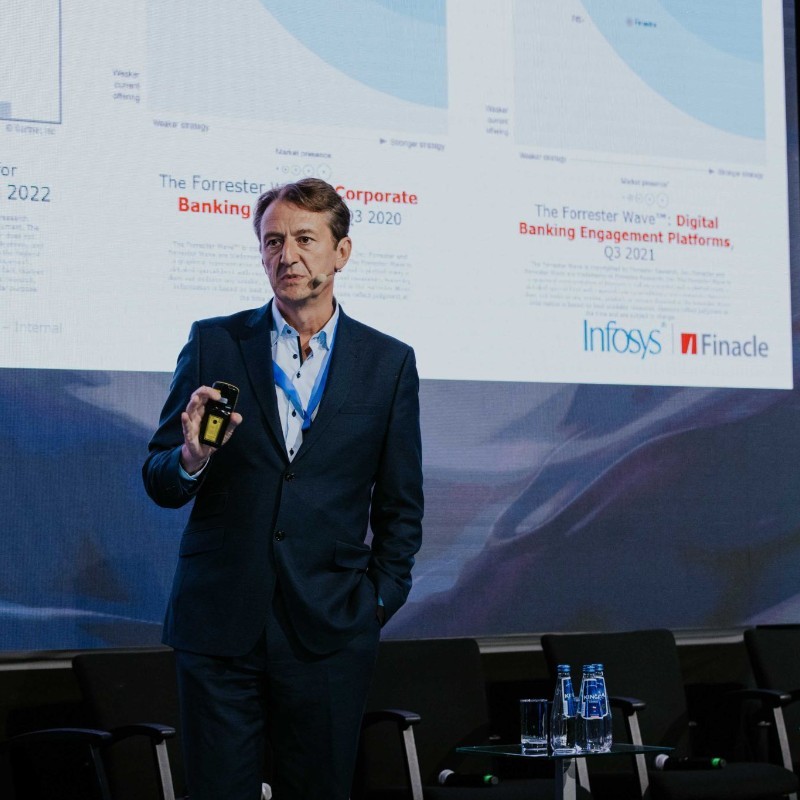Remittances as an economic and social engine
For many of us, the ease of accessing digital financial services, such as contactless payments and electronic transactions, is often taken for granted. However, across many parts of the world, millions of people do not have access to digital bank accounts or credit and debit cards and rely instead on cash for daily transactions and savings.
by José Cabral, Managing Director, Ria Money Transfer

In the age of globalisation and interconnectedness, more people than ever before are migrating to different countries in search of better opportunities. Many of the more than 280 million migrants around the world send money to loved ones back home. These cross-border transactions, called remittances, accounted for over $600 billion in income globally in 2021 and serve as a lifeline for many. Families receiving remittances invest them in education, healthcare, and food security.
The UK as a major remittance hotspot
Some countries around the world are hotspots for both immigration and remittances, as the two often go hand-in-hand. In the UK, over 14% of the country’s population in 2021 was foreign-born, totalling over 9.6 million people and a large portion of the job force. The majority hail either from other countries in Europe or from Asian countries such as India and Pakistan. With a significant migrant population comes a significant international cash flow; the UK is the source of billions of dollars in remittances sent annually, which make a sizeable impact on many recipient countries’ GDPs.
India is the country of origin for the largest portion of migrants in the UK, representing 9% of the country’s foreign-born population. It is also a leading recipient of remittances worldwide, and nearly 15% of UK remittances go to India. In 2020, India received over $3.9 billion in remittances from the UK alone, totalling almost 7% of all remittances sent to India in that year — only the US and the UAE had higher figures.
Nigeria receives the greatest total volume of remittances from the UK. An estimated $4.1 billion in remittances was sent from the UK to Nigeria in 2021, totalling 24% of all remittances sent to Nigeria that year. Other significant remittance flows from the UK include Pakistan, where almost 5% of the UK’s foreign-born population comes from and which received over $1.68 billion in remittances from the UK in 2020, and Poland, a country of origin to 7% of migrants in the UK and recipient of $1.14 billion in 2020.
The impact this has on economies
Remittance flows to the developing world have a powerful role in shaping local economies. Both Nigeria and India are global powerhouses with enormous economies, of which 4% and 3% respectively are derived from remittances. In Pakistan, remittances represent 8.7% of GDP, and over 6% of those remittances come from the UK. Cross-border money transfers to these regions are vital to the families who use this money to pay for food, medicine, and education, as well as to fund small businesses and make investments.
The ease with which migrants in sender countries like the UK can access remittance services has a direct impact on economic development in the regions that receive them. But those sending remittances to loved ones back home do face significant barriers, among them the cost of international money transfers. Globally, about 6% of the money sent by migrants is absorbed in transaction fees, with costs differing significantly between companies and destinations. The World Bank estimates that a 5% reduction in the cost of sending remittances would increase the amount available for migrants to send to their families by up to $16 billion per year.
Financial inclusion/social angle
One way to reduce costs and make transactions more accessible is to implement mobile solutions to send and receive money digitally. By making it easier for people to receive money wherever they are, remittances have an even greater potential to impact both national economies and individuals’ financial standing, creating greater financial inclusion. This can be especially true for previously unbanked individuals, who have their first connection to digital banking services through remittances. It can also help those who previously lived paycheque to paycheque or with irregular sources of income finally begin to put money aside.
The role remittances play in developing local economies through increased cash flows goes hand-in-hand with the social benefit they provide to the families and communities that receive them. The billions of dollars sent annually to developing countries can allow recipients to improve their standard of living through education, healthcare, food security, and savings. By giving people simplified access to finance by digital means, people across the world can achieve greater financial independence.
Embracing the journey to cloud technologies
Unless you’ve had your head in the clouds for the past few years it would be difficult not to notice the pace of adoption of cloud technologies in financial services and the capital markets.
by Alex Walker, VP, Global Network Data Sales, IPC Systems
Perhaps one unforeseen consequence of the global pandemic was that the working world in general, and financial markets, in particular, would not simply resume ‘business as usual’ the moment physical restrictions on entering workplaces were lifted. Just a few years ago the idea of virtual trading floors would have been unthinkable, given the challenge and heavy burden of meeting rigorous security, performance, surveillance, conduct and reporting obligations. However, new cloud technologies not only facilitated efficient remote trading; post-pandemic there has been a seismic shift in mindsets as to what ‘institutional-grade’ operational and business models should look like.
The benefits of using the cloud

Market participants have options when it comes to selecting the cloud configuration that best satisfies their specific and extensive requirements, from security and performance rigour to ease of integration with internal infrastructures and external counterparts. Cloud technologies, in general, offer key benefits that include a pay-as-you-go subscription model, flexibility, scalability, significantly reduced times to market, removal of barriers to entry for new solution offerings, and the ability to respond more quickly to evolving market conditions.
As a pioneer and advocate of new data distribution and communications technologies, we endeavour to understand our clients’ pain points and their key drivers of change in embracing new cloud technologies, innovation, and emerging trends. Our survey this year of 500 professional trading practitioners uncovered that there was a relatively even split of respondents favouring integration with a public cloud over single and multi-party private clouds. We find that smaller firms and retail traders tend to focus more on cost-efficient market access and leveraging the economies of scale offered through shared (public) cloud infrastructures. However, the Tier 1 banks and large financial institutions will more likely lean towards private cloud infrastructures with enhanced, stringent, and rigorous performance and security layers. The solution for the majority of financial firms will be a hybrid of traditional and cloud connections and distribution models.
In terms of front-end trading applications in the cloud, it is still relatively early as far as ‘proof of concept’ and, not least because of the weight of regulatory and compliance obligations, the trading industry remains understandably circumspect about full adoption. That said, we are seeing a steady migration to certain aspects of cloud services, and over time expect order management services – and indeed core matching functionality – to transition increasingly to the cloud.
The foundation of digital innovation
Cloud adoption offers a starting point for firms to completely rethink how they access and manage costly, high-maintenance operational resources such as network and communications infrastructure, data storage, client connectivity, etc. This shifts business mindsets beyond pragmatic ‘build or buy’ decisions to a nimbler ‘as-a-service’ business model.
The ‘as-a-service’ consumption model mitigates the cost and risk of significant direct investment in cloud connectivity and service capabilities – as well as the arguably greater risk of being left behind as new cloud technologies and applications become the standard. Along with the anticipated increase in digital data points, financial institutions will be compelled to embrace the power of the cloud to continue to stay relevant in an increasingly challenging competitive environment, particularly with respect to new, non-bank, cloud-native industry disruptors.
The everyday integration of digital technology into our lives has had a significant impact on workplace cultures and structures. Cloud technologies allow firms to be much more flexible, mobile, and innovative. The success of this approach – in terms of measurable performance and driving more cloud-led business decisions to ongoing innovation – is linked irrevocably to the robustness of a company’s connection between its infrastructure and cloud environment.
What’s Up, Payments?
While the global payments scene continues to be dynamic, broadly speaking, there are three regional approaches directing the progress of the market in their respective geographies. In the European Union, the United Kingdom, and South Korea, the regulatory aspect – rules such as PSD2, GDPR and Open Banking regulations – remain highly influential in the changes taking place, especially the creation of financial ecosystems.

In Asia, it is market and consumer forces that are driving payment innovation. This article by Rajashekara V. Maiya, Vice President and Head, Business Consulting Group, Infosys Finacle, discusses the different forces that are driving global payment innovation.
Power is passing into the hands of consumers via their handheld devices, which are today more technologically capable than desktops and laptops. With every individual owning a mobile, maybe even two, in the markets of Asia, “cross-industry relativism” is in full flow – consumers, who can pay for their Amazon purchases in one Paytm click, want similar levels of payments innovation from their banks.
In North America, where an overall weak payments market infrastructure exists side by side with pockets of excellence, it is the latter that is leading payments evolution. For example, Silicon Valley’s rich financial ecosystem is a driving force that every bank wants to be a part of. The North American approach is the opposite of the European one, with innovators, rather than regulators, in the payments driving seat.
Besides these three approaches, the following factors are shaping payments today:
Trends in the making
- Emerging regulatory or recommendatory payments standards – FDX in the U.S. and Canada, BIAN globally, PSD2 in Europe, CMA in the U.K. and CDR in Australia
- Trending domains, for example, Buy Now Pay Later in North America and Europe; P2P payments in Latin America, Europe, and North America; personal finance and payments aggregators; and cryptocurrency-based money transfer
- Disruptive business models, for example the recently announced Digital Banking Units in India, or other “people-less” branch models, providing a frictionless banking environment
- Banks behaving like Fintechs, and Fintechs behaving like banks to diversify payment and remittance ecosystems
- APIs which provided a strong enablement framework and then evolved an economy of their own
- New technology trends, including green tech, metaverse, big data, artificial intelligence and cloud, making the payments revolution more solid, yet seamless.
Retail payments innovation is crossing over to SMB and corporate segments
It is time to push the boundaries of payments, to give SMB and corporate banking customers the same benefits as retail consumers. For example, how can the QR code, where the rapid growth in subscription (1.5 billion in 2020 predicted to reach 2.2 billion in 2025) fuelled peer-to-peer or person-to-merchant payments, be extended to drive ease of SMB and corporate payments?
A start for global standards
The shift from ISO 15022 to ISO 20022 is freeing cross-border payments from message type, to allow a broad swathe of remittance transactions. As payments become open, and API-driven, it is morphing from a peripheral service into a “product” in its own right. What’s more, it is seen as a foundation for innovation, a potential “platform” offered as a cloud-based service with ecosystems built around it. No other banking product offers so much possibility.
A new class of start-ups, namely paytechs, is focusing only on payments innovation. Almost 90 countries are involved in pilot, or advanced POC, projects to build Central Bank Digital Currencies, which will fuel the payments journey by enabling faster, cheaper, safer, transparent and seamless transactions.
While payments are looking up globally, some regions are clearly ahead.
India leads the way
India is taking its success in digital payments forward with its Payments Vision 2025, which seeks to bring about industrialization, internationalization and inclusion in payments, and ensure UPI transactions continue to grow at a 50 percent CAGR over the current base of 6 billion monthly transactions.
Expectations run high with regard to innovations such as ONDC (Open Network for Digital Commerce) and OCEN (Open Credit Enablement Network), which are expected to drive payments to a new level. Both are game-changers, with the potential to disrupt the disruptors. ONDC will democratize digital commerce to bring about a multiplier effect in payments. OCEN will help to close the $1.2 trillion funding gap that cannot be bridged by the mainstream banking industry – think street vendors, micro-industries, and other tiny businesses with no access to formal credit who can now tap a microlending ecosystem. OCEN, which has already got the support of 7 banks, 40 account aggregators, and several Lending Service Providers, will change lending from low trust, high cost, high friction to high trust, low cost and low friction, to set benchmarks in global banking.
What next
APAC payments are expected to expand at 22.8 percent CAGR between now and 2026, must faster than North America’s 6.6 percent or Europe’s 12.9 percent1. One reason is that North America in particular is battling process and technology challenges, an example being the traditional, low trust-high friction lending processes mentioned earlier. A solution is to build “public good” infrastructures that can serve a variety of purposes, such as India’s UIDAI, whose Aadhaar number facilitates everything from bank account opening to SIM card purchases to direct benefit transfers.
This is especially critical because in theory, the American e-commerce market, estimated at $2 trillion in 2025, is best placed to propel the future growth of real-time payments. The problem is that it lacks the market infrastructure to do it. The U.S. should start building this infrastructure now, to be ready to tap exciting future opportunities in global payments.
Sources:
The future of financial services in the metaverse
The metaverse as a concept has permeated much of the media narrative around technology this year, having been catapulted into the public conscience when Facebook changed its name to Meta back in November 2021.
by Jawad Ashraf, CEO and Co-Founder of Virtua
A digital network of interoperable, interactive virtual worlds – this new medium of interconnectivity promises to have as big an impact on society as social media did back in the noughties. Experts, developers and brands are constantly innovating in the space, exploring the myriad of ways in which they can capitalise on the increased scope for audience retention and growth.
A whole new world

The entertainment industry was – perhaps as expected – among the first to jump on the wagon and get ahead of the curve, diversifying their creative strategy across various virtual worlds. Some high-profile examples of this would be Manchester City partnering with Sony to recreate a virtual Etihad Stadium in Decentraland; Spotify Island launching in Roblox; Warner Music Group entering Sandbox, and us at Virtua collaborating with Williams Racing to bring F1 fans a more immersive experience. With this, rhetoric has appeared that implies that the metaverse is essentially an ultra-advanced arena for fans and gamers to wrap themselves further around entertainment channels more so than they’ve ever been able to do before.
However, all types of institutions and enterprises stepping into the metaverse – including digital real estate agents, fashion retailers, law firms, advertising agencies and educational institutions and advertising agencies. Even some small businesses have been testing out ways in which they can integrate Web3 into their daily operations with staff and clientele. Along with the progressive adoption of blockchain technology in the physical world and the rise of NFTs, we are preparing to see a monumental shift in the way society functions. A hybridised reality, in which the fundamental dynamics of social life are interchangeable between the physical and virtual, is on the horizon.
Implications for financial institutions
For financial institutions, this means engagement with Web3 concepts and the metaverse will soon be unavoidable. It will be a necessity. They should thus prepare themselves to be malleable in their approach to changing tides. Flamboyant PR stunts may not be called for, but they should certainly be familiarising with concepts such as asset programmability, smart contracts and peer-to-peer networking. In the metaverse, users will not only be communicating – but also earning and spending. The revolutionary aspect that comes into play and differentiates Web3 from Web2 is that they will now be able to merge real and virtual assets which the blockchain will grant them total control over. The financial sector will be required to adapt its services with new means of transactional exchange, asset management and identity verification in order to keep up.
Decentralised blockchain technology is resistant in practice to the agency that financial institutions exercise, but this does not mean that banks, financial advisers, brokerage firms and insurance companies won’t have a place in the metaverse. The likes of JPMorgan Chase, Bank of America and HSBC are all already involved in the metaverse. Investors, gamers, NFT collectors and general users will need the variety of services provided by institutions as they look to immerse themselves in this new world.
McKinsey & Co’s ‘Welcome to the Metaverse’ report also highlights that the shift is already occurring. Financial institutions are experimenting with virtual substitutes for telecommuting centres, investment advisory services and employee training within newly developed ‘financial towns.’ Another sector that will unquestionably be in high demand is the insurance industry. Metaverse residents will not only own digital property and NFTs, but also their data – which their avatars will be tethered to. With the blockchain still susceptible to hackers, all of this can still be stolen in the metaverse. Services that offer users cybersecurity policies to protect users from those potentialities will therefore be an imperative component of Web3 security measures. Forming partnerships with these firms will be a priority for Metaverse developers as they seek to provide their users with the comfort and surety that will attract them to their spaces.
Swiss Bank ‘Sygnum’ have also demonstrated the capacity for financial institutions to adopt crypto-native protocols – having already developed, regulated and managed many assets on DeFi (Decentralised Finance) applications using blockchain technology. They’ve recently announced that they will be the first of their kind to open a metaverse hub – due to launch in Decentraland’s equivalent to New York’s Times Square on 27th September.
The first steps to take
Beyond enhancing convenience for their staff and clients, firms across the sector should firstly be looking toward the marketing opportunities that the metaverse will provide them. As the retail and entertainment industry continues to innovate new means of interaction with their customers and audiences, so too should financial institutions be capitalising. The chance to strengthen their client base through new means of rapport is clear. As television, radio and print adverts were supplemented by social media ads, social media operations are being extended to carefully orchestrated creative initiatives in the metaverse. Despite whatever caution, there may be to incorporate the likes of avatars and virtual offices into their agendas, it is certainly worth considering the option to dedicate an arm of their workforce to focus on a metaverse strategy. It is as big an opportunity for them as it is for any other industry.
Successful digital banking journeys are destined for cloud
by John Barber, Vice President, Europe, Infosys Finacle and Rama Gabbita, Global Head, GSI Partner Industry Solutions, FSI at Google Cloud

Here is a sprinkling of digital banking stats:
- Globally, more than 118 billion real-time payment transactions were made in 2021, up nearly 65 percent over the previous year, and expected to cross 427 billion by 2026.
- As per an estimate, about 75 percent of the population used digital banking in the United States in 2021.
- More than 96 percent of India’s 6 billion monthly UPI-based real-time open payments are originated by big tech and fintech companies.
- Today’s digital customers have high system performance expectations – for example, the response to a balance inquiry must not take more than 10 milliseconds; all services should be available 24/7; they also have a very low tolerance for technical failures.
As these forces, namely, increasing consumer digital adoption, rise of non-banking players, and high experience expectations, converge around them, traditional banks are pushing ahead with their own digital plans. And cloud is a key enabler of that transformation.
A recent report from Infosys Finacle and Google Cloud says that cloud is driving digital banking success in four ways:

Maximizing digital engagement by enabling insights-driven propositions: Today’s customers want banking experiences to match shopping on Amazon and viewing on Netflix – personalized, frictionless, and seamless across channels. In fact, they would prefer banking to be embedded so deeply within their primary consumption journeys as to be almost invisible. To provide the innovative products and contextual experiences that customers seek, banks must gather customer data across channels, and use its insights to create personalized solutions. Only cloud can meet the analytical requirements of banks, which on average, handle 1.9 petabytes of data each day. By providing seamless, democratic access to data and real-time interactions at unlimited scale, as well as a variety of tools, cloud helps banks engage customers better.
Driving digital innovation in the form of platform banking models: Innovation leadership passed on to non-bank players, such as fintech and big tech, a few years ago. With retailers, telecom operators, and other businesses making a play for certain financial service niches, competitive boundaries have started to blur; the good news is that this has opened up opportunities for incumbent banks and their new rivals to collaborate within an ecosystem or embedded model of banking. Cloud supports this by cutting down the cost and time of provisioning compute and storage resources for innovation, besides offering a variety of technology capabilities as a service. This allows banks to take new products to market much faster than before. For instance, China’s WeBank – a leading cloud-based, digital-only bank – is estimated to release 1,000 updates a month, whereas an average universal bank manages only 50-100.
Achieving operational excellence by improving resilience, performance and cost-efficiency: Traditional banks’ operations have been under stress for several years now. Low interest rate incomes, especially in industrialized markets, steadily eroded margins even as compliance and other costs continued to increase. New digital players with light (or zero) physical infrastructure and no legacy technology burden operated at a cost-to-income ratio of 20 to 30 percent, less than half of many banks. With relatively easy capital flowing in, they were also much more agile than incumbent institutions.
When the pandemic broke out, causing an unprecedented increase in digital transactions, resilience joined cost efficiency and performance in the list of operational priorities. Only cloud had all the answers.
Cloud offers highly stable and robust infrastructure, at much lower than on-premise costs. Also, banks can consume technology as a service, saving the cost and effort of managing and maintaining systems. Use of public cloud services can further cut operational costs.
In conjunction microservices, Containers, and DevOps, cloud streamlines software development to enable fast and flexible deployments at scale. Last but not least, cloud has the strength and scale to maintain high performance even at peak workloads.
Multiplying value from modern technologies: Advances in artificial intelligence (AI), machine learning, blockchain and other digital technologies can bring enormous value to banks. But they also need massive compute and storage resources. Only cloud can provide these capabilities.
In a recent research study conducted by Infosys, a third of banking respondents said that cloud enabled them to develop highly integrated AI capabilities. Cloud provides a foundation to run AI and big data models, as well as the latest AI tools on a subscription basis. It also amplifies other technologies, including blockchain by enhancing scalability and performance.
Way to go
While there is widespread agreement that cloud is the way forward, the journey has been slow so far. Among the different deployment models, private cloud is still the most popular option, being used by 41 percent of banks, while hybrid and public cloud are used by about 30 percent. For the many banks that do not use cloud services, the barriers mainly stem from regulatory and cost issues. It is important to address these concerns without delay and get on cloud, so as not to get left behind.
A question that even banks that have committed to cloud ask is what is the best way forward. Based on our experience, we recommend that banks consider the following while embarking on their journey:
- Scale cloud maturity by moving mission critical workloads along the cloud continuum, Infrastructure as a Service (IaaS) to Platform as a Service (PaaS), and finally, to Software as a Service (SaaS).
- Adopt multi-pronged transformation for migrating applications, leveraging rehosting, refactoring, re-platforming or other options based on application size, customization needs and the level of transformation skills.
- Use hybrid cloud to get the best of both public and private cloud worlds.
- Follow a multi-cloud strategy to unlock maximum value across different workloads and requirements.
- Last but not least, go the distance. It is necessary to migrate a critical mass of at least 60 perent of the workload to achieve optimal results.
To know more about how banks can scale their cloud success, read the report “Scaling Digital Transformation with Cloud”. The report by Infosys Finacle and Google Cloud delves into the need to accelerate cloud adoption and provides insights on the potential impact of the cloud across value streams. It also highlights the current state of the industry and puts forth key recommendations to scale cloud success.
What’s next for Buy Now Pay Later

After a summer of bad news for the global economy, we are at a worrying turning point. Rising interest rates, high inflation, and stunted consumer spending have created a complex path ahead for all. The economic fog is even denser than usual, but many would agree with the view that when the going gets tough, fintech gets going.
by Tom Voaden, Strategic Partnerships Lead at BR-DGE
For the Buy Now Pay Later sector, like so many areas of the fintech ecosystem, these economic headwinds will create both challenges and opportunities. Tightening consumer purse strings is an opportunity for BNPL to reinforce its core mission around low fees and choice. In turn, rising consumer demand for alternative payment methods could accelerate merchant adoption of BNPL services at the till. Recent data from Juniper Research predicts that BNPL consumer usage will increase from 360 million today to over 900 million by 2027, perhaps highlighting that the pandemic surge was just an appetiser to a prolonged period of accelerating global adoption for the rest of this decade.
However, in times of recession, customer default rates will need to be monitored closely and there is now an even greater need to safeguard consumers. In this area, firms have an opportunity to be forward-thinking and embrace prioritising innovative consumer protection and controls before regulation comes into play.
BNPL 2.0 = diversification
With an eye on the future, Buy Now Pay Later providers are increasingly looking to diversify their offerings ahead of regulation. Open Banking is one area where the likes of Klarna have focused, and see strong growth opportunities in the future. New ventures such as this can also allow the enablement of new capabilities which combine with and complement their core BNPL offering. Their new business unit “Klarna Kosma”’ claims to process nearly a billion information requests to bank accounts every year. Global expansion is another priority, with leading players looking to make inroads into markets where BNPL penetration has room to grow, such as the US and India.
Beyond this, regulation will lead to greater diversification of the goods and services that BNPL can be used for. The reality is, the more BNPL providers are required to, or decide to secure financial licenses, whilst also carrying out more stringent checks on customers, the more they may have scope to offer higher lending and longer-term payment plans. It is likely that we will see providers focus more on areas such as automotive and medical services post-regulation.
The bottom line here is that BNPL providers see a number of strategic opportunities across the ecosystem to leverage their proposition and ultimately unlock new revenue streams. The intent and appeal of this is clear, but it will be interesting to see in the coming years how this plays out.
Regulation as a driver for BNPL consolidation
In the UK, the sector is in its final sprint to regulation, with the government pledging to publish a consultation on draft legislation towards the end of this year. In preparation for this, many firms will need to increase their resource and focus within legal, compliance and risk to ensure they are playing by the rules. This need will no doubt impact the margins of BNPL providers and could be a catalyst for M&A in the sector.
Across the globe, there are now hundreds of BNPL providers offering various shades of flexible payments. The jury is out on whether this is an overcrowded space, but it is easy to see consolidation becoming the answer when market share and resources are inevitably squeezed. Block’s acquisition of Afterpay earlier this year further shows the appeal of the sector to larger financial institutions. A number of factors are at play here, but it is likely that M&A becomes as common as fundraising rounds for the BNPL sector in the years ahead
Looking to the future
The economic outlook is challenging for businesses and consumers. Forward-thinking and agile, the BNPL sector will need to harness its knowledge and expertise to support consumers at the same time as continuing its impressive growth trajectory. Increasing competition between payment providers will also further drive innovation in the checkout space which many will need to react to. The customer journey has also grown in importance and is just one key area where providers can innovate in order to meaningfully support both consumers and merchants.
As demand amongst consumers has grown, and preferences evolve, it is important the industry works to ensure merchant customers can meet this shift. The opportunity, therefore, lies not only in offering consumers greater payment flexibility and choice at the checkout but also in ensuring merchant checkout innovation moves as fast as customer preference diversifies and changes.
As the BNPL sector matures, it is reasonable to expect that the path ahead will be very different to the recent past.
Spoof? You can’t handle the Spoof

Markets have been stunned recently by regulators hitting high-profile organizations, including tier one investment banks and trading platforms, with significant fines for cases involving ‘spoofing’.
by Steve Wilcockson, Product Marketing, Data Science, KX
Spoofing is a form of market manipulation where a trader places a large series of orders to buy or sell a financial asset, such as a stock, bond, or futures contract, with no intention of executing them. With increasing varieties of interconnected asset classes being traded, organizations must be more alert across all of their markets or risk severe sanctions.
For example, in one case, a trader took advantage of the close correlation between U.S. Treasury securities and U.S. Treasury futures contracts and engaged in cross-market manipulation by placing spoof orders in the futures market to profit in the cash market. This resulted in a $35million fine! Or take the case of precious-metals traders who consistently manipulated the gold and silver market over seven years and lied about their conduct to regulators who investigated them. Penalties are in the order of a billion USD.
A revolution in detection
Such cases represent a clear failure to prevent instances of market abuse, and we might ask how that is possible given recent investments in detection systems designed to help protect organizations from such activity.
Technology on its own is not a solution. Personal ethics are, and always will be, an issue. However, technical evolution in how spoofing is conducted must be countered with a revolution in spoof detection. Traditional spoofing operates where false, but manipulative, orders are placed on the same asset where the unlawful profits may get realized. Traditional systems may capture such instances well. However, systems can and have failed in cases of more furtive manipulation, such as realizing the profit on a derivative by placing the spoofing orders on an underlying asset, not the derivative contract itself.
Successful future-proofed technologies must look for correlations across assets, business units, and markets. But more monitoring means more data and compute overhead, as well as team and workflow challenges.
When monitoring so many more data combinations, static detection systems face challenges. They need to be sufficiently agile and dynamic to handle greater data dimensionality. Robust statistics, machine learning, and behavioural analytics can help quickly synthesize data, provide early indicators of suspicious activities, and quickly eliminate false positives, but more is needed. Delivering rigorous historical event analysis and real-time insights, detection systems and their owners need dimension-busting algorithms that can work with ever-increasing volumes and complexities of data at speed.
Scalable analytics
Detection technologies must adapt to evolving market needs: new data types, the sheer volume of data, and constant updates over time. Time-series data – collections of data, often from different sources and types, organized through time – is the most efficient base unit, enabling ready processing to seek correlations, anomalies, and patterns. For example, when looking for spoofing and “layering” specifically, internal order/quote actions and trades are compared to market quotes, not just top of the book but also in their depth and consolidated trades. This helps determine if deceptive orders and cancellations that formed part of the strategy were marketable (i.e., likely to execute) at the time of the transaction. This can consist of hundreds of millions of records or more. The North American futures industry, for instance, generates over 100 billion order messages each day, and the securities markets billions more!
Choosing the right haystack
Another challenge is finding meaning in the masses of data. In plain terms, when looking for a needle in a haystack, select the right haystack to start with, and then minimize the disruption to finding the needle. In such cases, machine learning can deliver more efficacy over such high-dimensional data than rules-based solutions. Yet rightly or wrongly, and for reasons of regulatory compliance and governance around explainability and reproducibility, machine learning models tend to augment easier-to-validate rules-based processes.
However, machine learning techniques can compute over as many axes as there are useful features, easily. One popular method deployed across many industries and applications – from police surveillance to cybersecurity, from search engine recommendations to predictive healthcare and financial surveillance – is a Support Vector Machine (SVM). This is a great algorithm to identify and score features – measurable pieces of data – such as colours and distances on an image, or, in the financial world, trade characteristics and trading patterns including fraudulent features across different data sets.
Many other algorithms and tests apply in addition to SVMs. Whatever the model approach – clustering or regression, linear or nonlinear, machine or deep learning algorithms – their parameterization is invaluable in financial surveillance. For spoofing, they can navigate well the frontiers and layers of normal and abnormal market activities, and assess balanced and unbalanced markets, where liquidity might be illusory or volume artificial.
Conclusion
Spoofing is hard to detect. Its very existence relies on trades likely not being executed, increasingly across different markets and assets. As the examples have shown, regulators have the teeth to find and punish such market-abusing spoofers, so regulated entities need to ensure they have the tools to find them too. Personal ethics will forever challenge financial organizations and regulators, but dynamic, flexible, fast technologies navigating highly complex data sets can future-proof organizations, adding agility and scalability to their fraud detection, crime, and AML stacks.
Driving Asia’s real-time payments boom

Long before the Covid-19 pandemic descended, digital money had already been gaining currency with consumers, small businesses, and large institutions around the world. Covid-19 accelerated that trend. In Asia specifically, it led to a profound shift in the region’s payment landscape.
by Leslie Choo, MD Asia, ACI Worldwide
Almost overnight, it showed why and how real-time payments can make a tangible difference and instantly help accommodate personal and professional needs. Access to immediate funds for basic subsistence and business continuity has now become paramount for consumers and businesses.
The outcome has been a generational leap in behaviour, where customers no longer accept a fragmented payment experience and instead expect and demand an agile, integrated, mobile-first, and consistent payment experience across all channels and form factors.
At the same time, the pandemic prompted consumers and businesses to reassess their use of cash. So much so that by 2025 non-cash transactions in Asia-Pacific are forecast to exceed the one trillion mark. Cash, it seems, now has a real competitor.
The shift to digital gathers momentum
The APAC online payments industry was profoundly impacted by the pandemic, leading to major advances in the market. 97% of consumers now consider the digital channel the best way to interact with their bank or use it as one of several channels in a multichannel or omnichannel offering.
The digital payments revolution continues to lead the way in Asia Pacific. The pace of transformation in APAC is quickening on the back of advances in technology, progressive regulation, a range of competitive participants, including traditional providers and new fintech entrants, evolving consumer needs, and the accelerated digitalisation on the back of the pandemic. In fact, digital payments are expected to account for 91% of total e-commerce spending by 2025 in Southeast Asia, up from 80% in 2020.
It is also widely acknowledged that digital and real-time payments significantly reduced the cash flow issues that plagued supply chains following the Covid-19 outbreak. The ability to pay suppliers, staff, logistics, and utilities digitally reduced the cashflow constraints of many businesses and highlighted the gross inefficiencies and costs associated with cash and traditional payment methods.
Individually, these factors would all generate growth for real-time and digital payments; however, combined, they are almost certain to ensure that high growth and adoption continue unabated. As dependence on digital payments increases, it’s hard to see consumers reverting to their traditional mindset or behaviour.
Explosion of form factors and frictionless payment experiences
As we emerge post-pandemic, payment acceptance infrastructure continues to evolve and drive payment innovation through a range of new payment methods or form factors.
Traditional smartphones and cards will remain the primary payment methods for now. But other forms such as wearables, IoT, and smart home devices will accelerate uptake and expand real-time and digital adoption while continuing to chip away at cash’s receding influence.
Transactions that are frictionless, global, and ubiquitous in nature will define digital banking in Asia, with capabilities being agnostic to payment methods or forms of storage across cards, digital wallets, bank accounts, and open banking.
Meanwhile, new services like ‘Request to Pay’ (R2P) will emerge as key differentiators. With Asia and the US already live and other regions preparing to launch similar initiatives in 2022, expect corporate and government collections to increasingly move to R2P.
Keeping it simple
Digitalisation is also forcing many banks and other financial institutions to rationalise their communication protocols to better navigate and communicate between varying regional standards.
Several traditional and current legacy data standards limit tracking capabilities and can pose major reconciliation and traceability challenges, especially in a real-time environment. ISO 20022, an international standard for electronic data exchange between financial institutions, will help.
ISO 20022 started out with low-value payments (cards, wallets, QR pay etc.) before incorporating high-value, real-time payments (cash management, Swift, etc.). This ability to combine or converge low and high-value real-time payment data makes it ideal for financial services as it dramatically reduces duplication and complexity while improving governance, visibility, and efficiency.
Ultimately, ISO 20022’s flexibility means any new real-time payment infrastructure won’t require a new data standard but can simply be combined with current systems, significantly improving time to market, effectiveness, interoperability, and governance.
Capitalising on cross-border
Despite the market opportunity and a high interest in regional payment scheme integration, cross-border payments have proved elusive in Asia.
Currently, real-time payments are restricted to domestic schemes and a small but growing number of bilateral agreements between close neighbours. But there are moves to change this, as Southeast Asia central banks continue to explore bilateral connectivity and interoperability between their domestic schemes to extend and expand regional linkages within ASEAN and the greater Asia Pacific.
While ASEAN still does not possess an integrated regional payments framework between members like the EU, many bilateral arrangements, such as the upcoming Singapore / India (mid-2022) initiative, have created greater organic integration. This creates a form of regionalisation by stealth rather than by design. As more of these bilateral connections emerge, real-time cross-border payments will surge, and with it, Asia’s economies.
The race to real-time
As the world continues to go digital, there is an opportunity to ride on the growth of digital payments and provide secure and reliable financial services to meet the ever-changing needs of Asia’s consumers. Digital and real-time payments are no longer a nice-to-have but a must-have.
It is clear the deficiencies and inefficiencies of cash are increasingly exposed to even its most ardent supporters, and the momentum is now with digital payments. With so many aligned stakeholders, the future of Asia’s commerce, and consumerism, is now clearly heading toward digital and real-time payments.
Changing consumer and retail trends across the region have propelled the rapid growth of Asia’s digital economy. There is a huge impetus and appetite from all parties for more integrated real-time payment services—consumers demand accessibility, immediacy, and simplicity. These developments are just part of an ongoing evolution of the real-time payments landscape that will see more advanced features being introduced to enhance the payments experience.
Digital Banking: Making more of less money
The cost of living crisis that the United Kingdom has been reeling under since late last year is set to get worse, with the annual household energy bill predicted to touch £3,600 this winter. This will put enormous financial stress on families, 1.3 million families went into the pandemic with savings of less than a month’s income. How can banks help customers manage their money so that they save costs and earn better returns in these trying times? This article discusses some ideas.
by John Barber, Vice President, Infosys Finacle Europe and Ram Devanarayanan, Head of Business Consulting, Infosys Finacle Europe
Money management features to support budgeting and planning

The first thing banks can do is provide a tool that simplifies budgeting for the ordinary customer. A few mainstream U.K. banks already offer apps that not only group spending by category – food, utility, entertainment, travel, for example – but also allow users to set (and monitor) category-wise budgets.
For retail customers, some banks also support planning for future expenses by creating “savings pots” in which they can accumulate money towards a specific goal. For example, retail customers can save up for school fees, home renovation and emergency funds. Similar to savings pots, business customers can use virtual accounts to manage their money better. This enables them to use money efficiently and save on overdraft costs and earn higher returns through money market investments. Last but not least, virtual accounts also benefit banks by reducing the costs associated with creating new accounts.
Education for a long-term view
Knowing how the money was spent allows customers to take informed actions to manage their finances better. But tools can only do so much. To really improve the state of financial health, banks should join the government and academic institutions in building money management awareness among the general populace. A great example is LifeSkills, a Barclays initiative that has helped more than 13 million young people learn, among other things, money management skills such as budgeting and avoiding fraud. HSBC believes in informing them young by using storytelling and gaming to teach money concepts to kids right from the age of three. The truth is that only sustained education will teach people to plan finances for the long term. At a time when one protracted crisis is following another, the importance of financial planning cannot be overstated.
Banks can also leverage analytical insights to send contextual alerts nudging customers to pay bills on time, sweep excess funds into a higher-rate deposit and renew an insurance policy.
Open banking for control, convenience and choice

Having greater visibility and control helps customers make the best use of depleted resources. Open banking can play a role in this. For example, it enables Variable Recurring Payments (VRP), whereby customers can authorise payment providers to make payments on their behalf within agreed limits. Customers have greater flexibility over setting up/ switching off VRPs compared to Direct Debits and can also see the status of their VRPs on a dashboard.
Another advantage of open banking is better consent management – users can define clear parameters for what they are consenting to. This is also useful for small business customers to manage cash. For instance, a small business can use this facility to authorise AISPs (Account Information Service Providers) and PISPs (Payment Initiation Service Providers) to sweep excess liquidity into an external fund to earn a higher return.
Still, the adoption of open banking is quite limited in the U.K. Besides having data privacy and security concerns, customers don’t fully understand how open banking works and what it could do for them. Since most of these issues can be addressed through education, banks should include open banking awareness in their financial literacy programmes.
This would benefit them too. Open banking is an opportunity for financial institutions to tap ecosystem partnerships to present a more complete service, including non-banking offerings, to customers. They can source the latest, most innovative offerings from fintech companies to fulfil a variety of needs at competitive rates.
Personalised services at the right “moments in time”
At the very least, “correctly” personalised services – based on data analytics – prevent banks from annoying customers with irrelevant offers. But the real reason for personalising banking should be to deliver the right service at the right moment of time as a frictionless experience. This is also very much in the banks’ interest because it reduces the likelihood of customers fulfilling their requirements elsewhere.
Personalisation also builds banks’ customer understanding, crucial for a successful ecosystem play. The future belongs to banks offering competitive financial and non-financial propositions sourced in-house as well as from third-party ecosystem partners. India’s first fintech unicorn, Paytm, exemplifies this; it grew quickly from being a mobile wallet bill payment platform into a vibrant e-commerce marketplace before acquiring a banking license. In the first 18 months, Paytm Payments Bank opened a massive $42 million savings account.
In contrast, financial institutions persisting with the traditional banking model will be relegated to the role of a utility. To avoid that fate, they must invest in a robust digital platform capable of onboarding and supporting a diverse partner ecosystem.
Embedded, invisible banking
Ecosystem banking leads naturally to embedded finance, where banking products and services are inserted so seamlessly within customer journeys as to be almost invisible. Embedded finance fulfils the younger generations’ demand for an Amazon type of all-encompassing, personalised, frictionless and entirely digital experience that the next-generation providers are bringing to market. For example, Paytm offers a wide range of services, including banking, insurance and investments, ticket booking, food delivery, shopping, and of course, seamless payments to finance all of these.
To compete, banks will also need to compete with apps by increasing the capabilities of their apps beyond just core banking processes. All these evolutions – ecosystem play, platform business model, embedded finance, and app style capabilities – call for comprehensive digital transformation, starting from the banking core. DBS in Singapore is an outstanding example of a traditional financial institution that transformed itself into one of the world’s best digital banks. But even as other banks go on this digital journey, they should continue to create highly competitive products and services. This is especially important because in difficult times customers’ needs, above everything else, are more value for their money.
